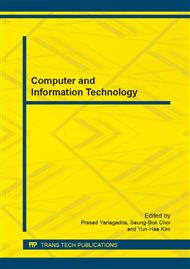[1]
Big data [EB/OL]. [2012-10-02}. http: /en. wikipedia. org/wiki/Big_data.
Google Scholar
[2]
The 2011 Digital Universe Study: Extracting Value from Chaos. International Data Corporation and EMC, June (2011).
Google Scholar
[3]
Grobelnik M. Big-data computing: Creating revolutionary breakthroughs in commerce, science, and society [R/Ol]. [2012-10-02]. http: /videolectures. net/eswc2012_grobelnik_big_data.
Google Scholar
[4]
Barwick H. The"four Vs" of Big Data. Implementing Information Infrastructure Symposium [EB/OL]. [2012-10-02}. http: /www. computerworld. com. au/article/396198/iiis_four_vs_big_data.
Google Scholar
[5]
Big Data Across the Federal Government [EB/OL]. [2012-10-02}. http: /www. whitehouse. gov/sites/default/files/microsites/ostp/big_data_fact_sheet_final_1. pdf.
Google Scholar
[6]
Science. Special online collection: Dealing with data [EB/OL]. [2012-10-02]. http: /www. sciencemag. org/site/special/data/,(2011).
Google Scholar
[7]
Hey, T., Tansley, S., and Tolle, K. 2009. The Fourth Paradigm: Data-Intensive Scientific Discovery. Microsoft Research.
Google Scholar
[8]
Wu, Hequan. ICT2012[EB/0L]. http: /wenku. baidu. com/view/874185c08bd63186bcebbc8f. html. ( In Chinese).
Google Scholar
[9]
Guojie Li. The scientific value in the study of big data [J]. Bulletin of Chinese Academy of Sciences, 2012, 8(9): 8—15. ( In Chinese).
Google Scholar
[10]
Alexandros Labrinidis, H. V. Jagadish. Challenges and Opportunities with Big Data [A], Proceedings of the VLDB Endowment VLDB Endowment Hompage table of contents archive [C], Volume 5 Issue 12: pp.2032-2033, August (2012).
DOI: 10.14778/2367502.2367572
Google Scholar
[11]
Kapil Bakshi. Considerations for Big Data: Architecture and Approach [A]. 2012 IEEE Aerospace Conference [C], March 3—10, 2012, Big Sky, Montana.
DOI: 10.1109/aero.2012.6187357
Google Scholar
[12]
Quang Tran. A Solution for Privacy Protection in MapReduce [A]. Proceedings of the 2012 IEEE 36th Annual Computer Software and Applications Conference [C], 2012, 515-520.
DOI: 10.1109/compsac.2012.70
Google Scholar
[13]
Surajit Chaudhuri. How Different Is Big Data? [A]. Proceedings of the 2012 IEEE 28th International Conference on Data Engineering [C], 2012. 5.
DOI: 10.1109/icde.2012.153
Google Scholar
[14]
Shan Wang, Huiju Wang, Xiongpai Qin, Xuan Zhou. Architecting Big Data: Challenges, Studies and Forecasts [J]. CHINESE JOURNAL OF COMPUTERS, 2011, 34(10): 1471-1752. ( In Chinese).
DOI: 10.3724/sp.j.1016.2011.01741
Google Scholar
[15]
Xiaofeng Meng, Xiang Ci. Big Data Management: Concepts, Techniques and Challenges[J]. Journal of Computer Research and Development, 2013, 50(1): 146-169. ( In Chinese).
Google Scholar
[16]
Xiongpai Qin, Huiju Wang, Xiaoyong Du, Shan Wang. Big Data Analysis—Competition and Symbiosis of RDBMS and MapReduce [J]. Journal of Software, 2012, 23(1): 32-45. ( In Chinese).
DOI: 10.3724/sp.j.1001.2012.04091
Google Scholar


